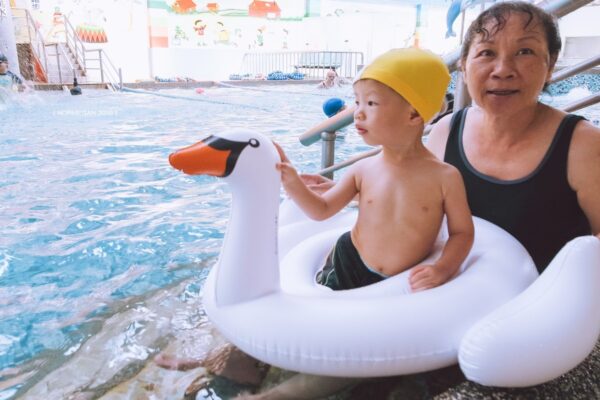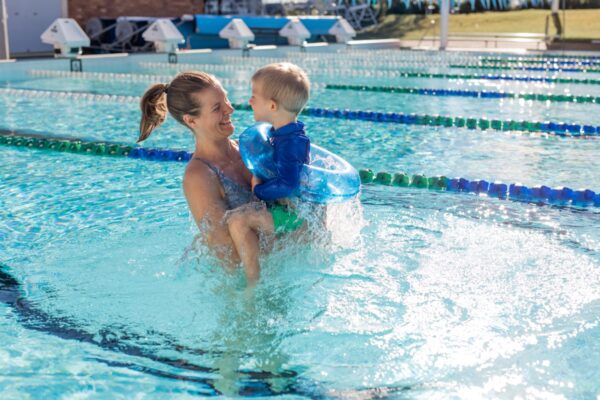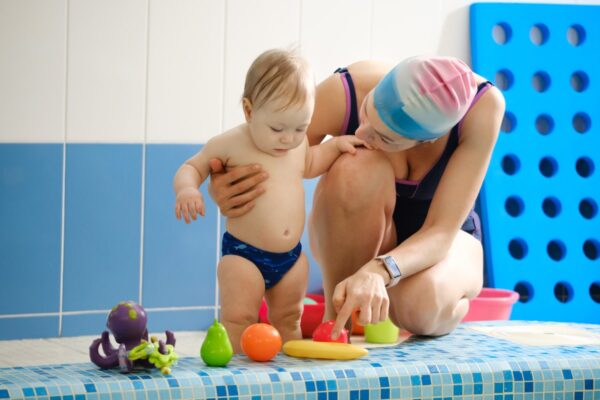
Teaching a child with autism how to swim can be tricky. Through consistency, patience and qualified swimming instruction, swimming can be fun. Having a properly trained instructor is key for children with autism.
According to the National Autism Association, between 2009 and 2011, 91% of drowning incidents in the US involved children with autism. Water safety is important for children with autism and extra supervision is required. Here are six steps that every parent should take for autism swimming therapy!
Good Routine and Consistency
Changing up the swimming routine can be helpful. However, this is not the case for every student. Children with autism like a sense of routine and the use of a consistent teaching method. This helps them become confident and comfortable. Instructors use the same:
- Toys
- Learning aids
- Tasks
Toys are a good way to help children with autism get comfortable in the water. This allows children to associate learning with fun. Swimming aids such as noodles help kids work on different skills. Floatation devices let them focus on one skill at a time. While a group of tasks can help them accomplish personal swimming goals.
Free Swim Time!
Be sure that your students can swim independently too. Having time to swim without assistance will help children with autism become more comfortable in the water. Gradually let children swim on their own. Here are some tips:
- Watch children in the water
- Stay closeby
Water supervision is also essential to keeping children safe in the water. Accidents can happen. So keeping an eye on your little one is essential. When children are learning to swim, you should let them gain independence over time. Start with guiding them through the water and then stay close while they are learning to swim.
Parent Involvement
It is normal for children with special needs to feel attached and confident around their parents. A parent being present during lesson time can give them the reassurance they need. Parents benefits from joint lessons:
- Seeing what techniques and visual aids work
- Understand the child’s amount of independence
Parents can practice swimming at home with their children as well. By knowing how their child with autism learns, they can help them learn using the same techniques. It also helps parents understand their child’s skill level. Some catch on quicker than others and that’s okay. Knowing how much help their child needs allows parents to enjoy swimming time as much as their kids.
Visual Aids
Having the right equipment can make a big difference when teaching children with autism. They are highly visual learners. The following things can help:
- Toys
- Flutter boards
- Floaties
Toys make swimming lessons fun and something to look forward to. Flutter boards help students work on their kicks. They support the top of the body and children are less likely to get tired out quickly. Floaties can be a good learning aid but should be used for fun and not learning tools. Learn more in our blog article about The Dangers of Waterwings.
Private Swim Lessons
Children with autism enjoy learning one-on-one. Numerous benefits come with private swimming lessons. Here are just a few:
- Improved student-instructor relationship
- Proper attention
- Faster learning
Your child will have time to get to know their teacher during private swim lessons. At AquaMobile, one of our certified and insured instructors can come to your home pool! This gives your child with autism the attention that they deserve. In turn, children will learn faster than they would in group lessons at a community centre.
Always Encourage the Student
All of the other swimming therapy techniques for students with special needs are important. However, this one is the easiest and matters the most. Examples include:
- High fives
- Clapping
Positive reinforcement is a key part of encouraging students. Children with autism are visual learners. So by showing them, they are doing a good job, you can be super supportive!







